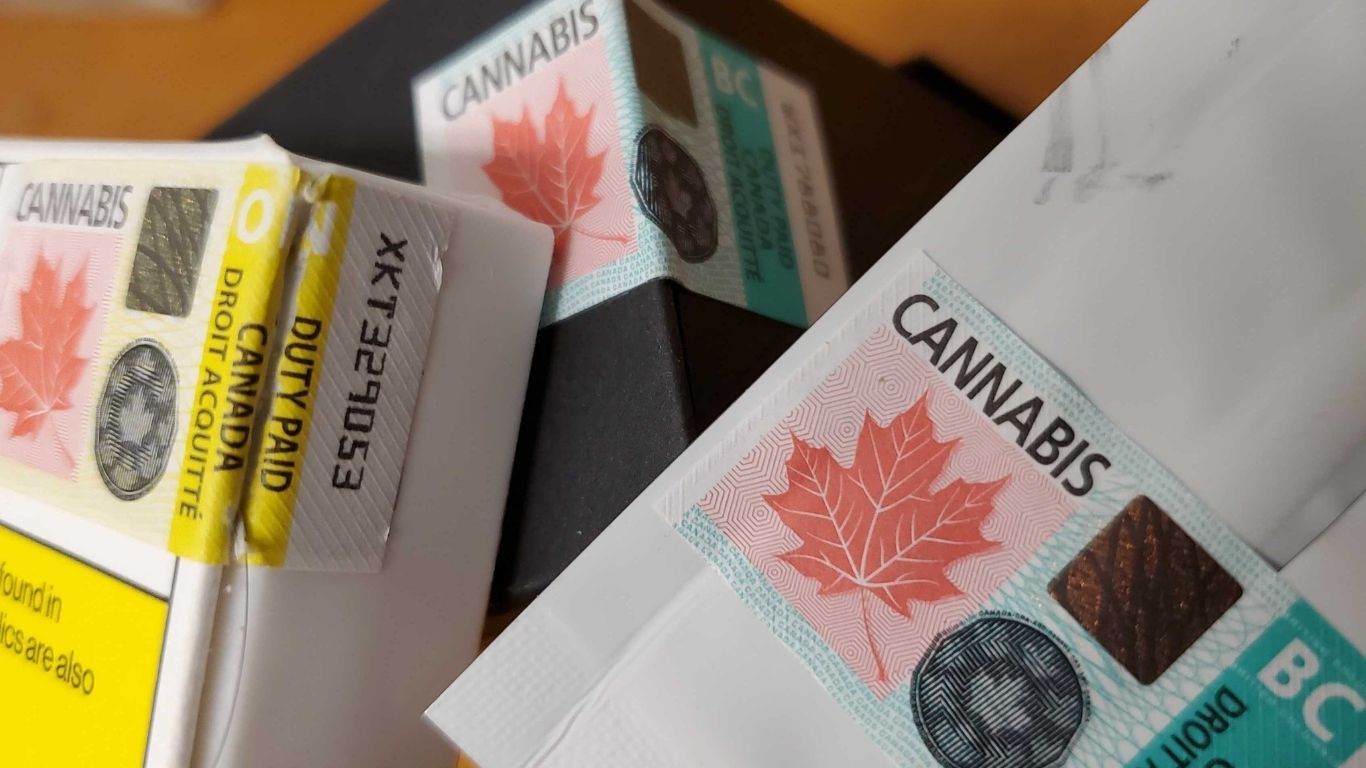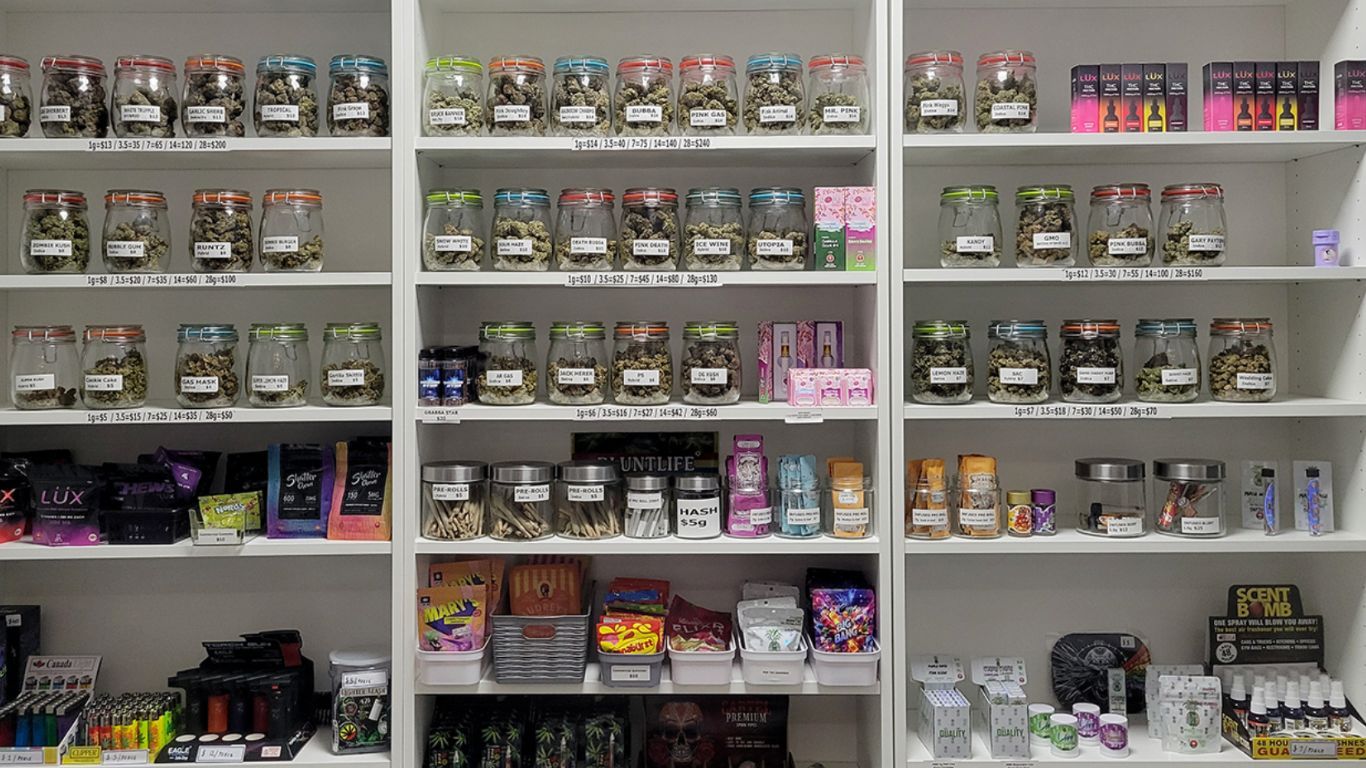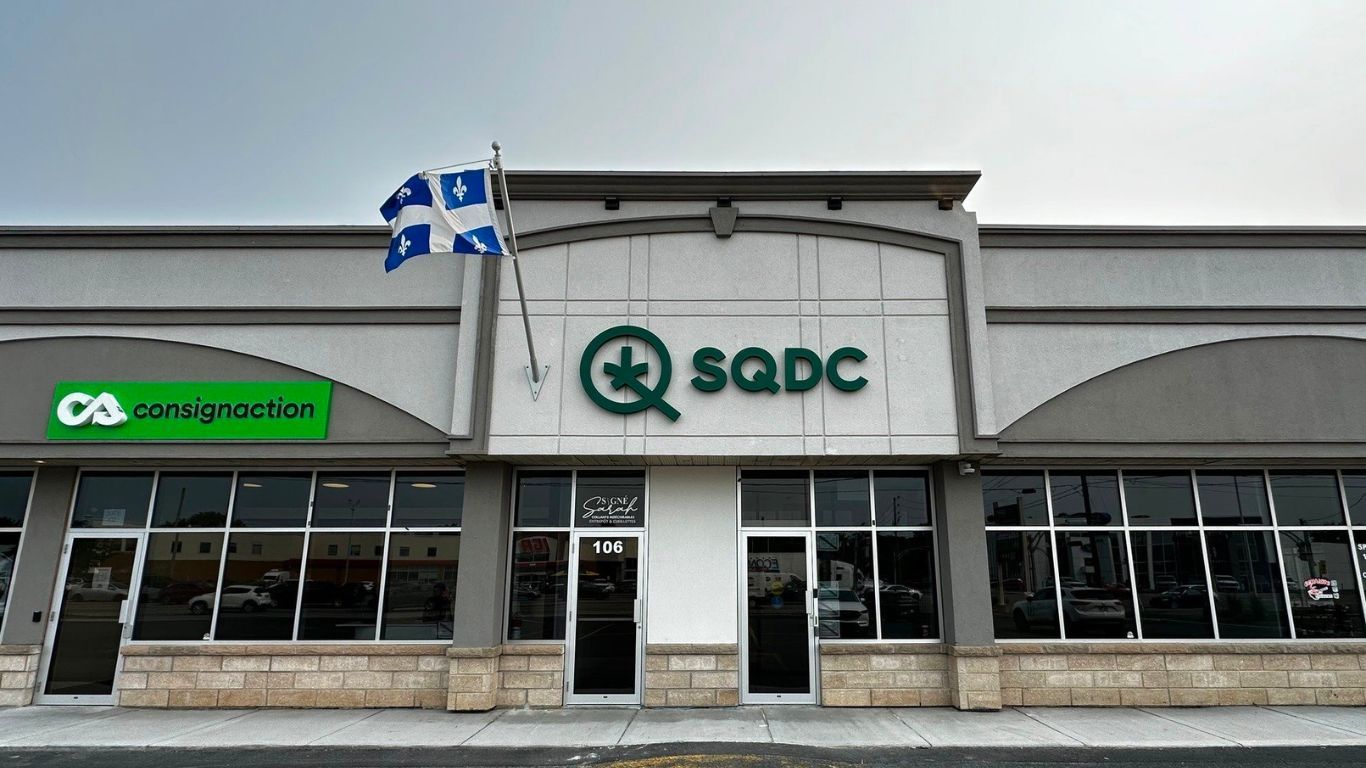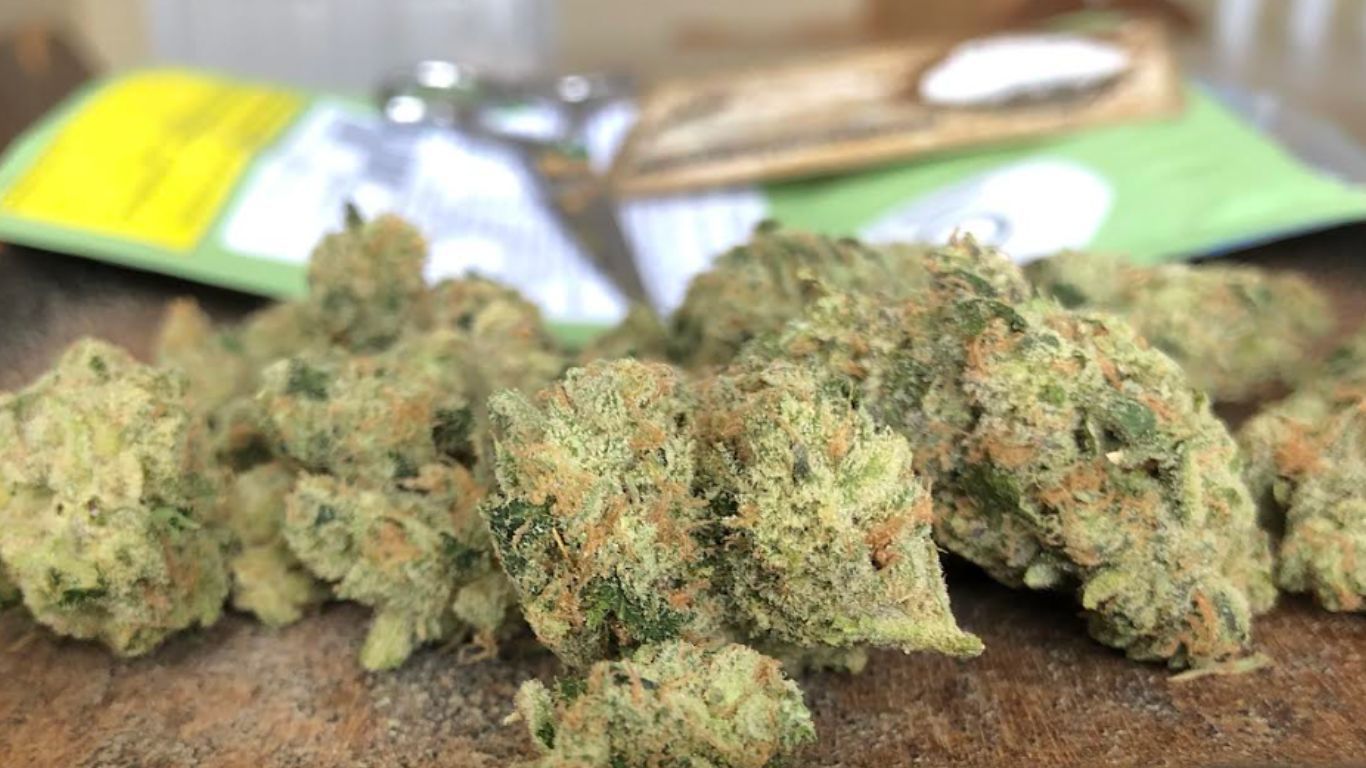
Federal and provincial tax revenues flowing directly to revenue funds
Since legalization, Canada’s cannabis industry has delivered substantial revenue to the federal government, as well as to the provinces and territories.
This income comes from a variety of sources, but by far the most significant contributor is the excise tax: with the exception of Manitoba, the provinces and territories receive 75% of excise revenue, and the federal government 25%.
The numbers have become substantial, with this money mostly going into general revenue, with no specific earmark for policing, health, or municipalities.
The numbers also reveal the extent of the economic pain within the industry, with the CRA owed over $200 million in excise duty.
Government cannabis revenues in steady climb
Public Accounts of Canada reports on revenues earned and expenses incurred for its fiscal year, which is between April 1 and March 31 of the following year (i.e. fiscal year 2022-23 ran from April 1, 2022, to March 31, 2023).
The following table represents the amount the federal government has collected annually from cannabis duties since legalization:
| Fiscal Year | Federal | Provincial & Territorial | Total |
| 2022-2023 | $227,059,146 | $736,102,823 | $963,161,969 |
| 2021-2022 | $160,243,306 | $577,006,587 | $737,249,893 |
| 2020-2021 | $108,903,363 | $395,763,093 | $504,666,456 |
| 2019-2020 | $52,037,312 | $210,805,029 | $262,842,341 |
| 2018-2019 | $18,360,732 | $76,040,081 | $94,400,813 |
| Total | $566,603,859 | $1,995,717,613 | $2,562,321,472 |
These amounts reflect the CRA’s administration of Cannabis Duty and Information Returns provided by the licensed cultivators, producers, and packagers of cannabis and/or cannabis products on behalf of the federal, provincial, and territorial governments.
The information specific to producers is not available. As such, the figures include all revenues administered by the CRA.
The government has yet to collect a staggering amount of money in excise duty.
“As at March 31, 2023, the total amount receivable for Cannabis duties is $221,238,299,” says Sylvie Branch, a CRA spokesperson. “This outstanding balance represents funds owed to the CRA and is not broken by federal, provincial and, territorial components.”
Following the Money
Upon announcing legalization, the Government of Canada committed close to $46 million over a five-year period to cannabis public education and awareness and up to $274 million for law enforcement, border detection, and deterring drug-impaired driving.
However, the federal government is not following a policy wherein cannabis excise revenue is allocated explicitly to cannabis-related issues regarding public health or law enforcement.
“There is no cannabis excise account,” says Caroline Feggans, a spokesperson with the Department of Finance. “All federal revenues, including those from cannabis taxation, are deposited in the Consolidated Revenue Fund (CRF). Funds from the CRF are used for the disbursement of all Government of Canada expenditures, investments, and transfers. The Government of Canada doesn’t in actual practice earmark any of its revenues, including those from taxation, for disbursement towards specific activities or initiatives.”
Health Canada tells a similar story. The ministry charges for application screening, security clearances, and import/export permits, as well as an Annual Regulatory Fee, which covers not only activities covered by Health Canada but also the Canada Border Services Agency, the Public Health Agency of Canada, and Public Safety Canada, “to support the objectives of the Cannabis Act with respect to the legislation and regulations of cannabis.”
However, despite the naming of requirements for specific agencies, all revenues collected through cannabis fees are deposited into the CRF and don’t go directly to Health Canada or any other agency.
“Health Canada has collected a total of $220.4 million in fee revenue since legalization,” says Tammy Jarbeau, a spokesperson for Health Canada. “Of the $220.4 million, the ‘Sales of goods and services—rights and privileges’ fee made up $200.8 million of total revenues collected, and the ‘Services of a regulatory nature’ fees made up $19.6 million of total revenue collected.”
These figures differ from the annual Public Accounts of Canada Reports, since the annual Health Canada Fees Reports are based only on cash collected and not only-invoiced amounts. Overall revenue from fees covers a portion of eligible program costs, which in 2022-23 represented 49%. Unsurprisingly, the remaining regulatory program costs are paid for through general revenue.
Ontario Cannabis Store now a major revenue driver
A similar scenario is playing out with regard to how the provinces and territories allocate their cannabis revenues, with Ontario cannabis sales driving significant revenue. For example, the Ontario Cannabis Store’s (OCS’s) first dividend payment of $150 million to the provincial government’s CRF was made on September 27, 2023.
“This will be reflected in its Financial Statements for the year 2023-24, and in Public Accounts of Ontario when published later in 2024,” says Mike Hajmasy, Senior Communications Advisor with OCS. “The government directed a process for OCS to make regular dividend payments, based on the agency’s net income, going forward.”
This degree of transparency is welcome, with Ontario and the OCS able to provide an outlook for next year, as per below, with the expectation that 2023-24 will incorporate OCS’s pricing changes, including margin reductions, effective September 11, 2023.
| Cannabis Related Revenues ($ Millions) | 2018-19 | 2019-20 | 2020-21 | 2021-22 | 2022-23 | 2023-24 (Outlook) |
| OCS Net Income | (42) | 19 | 67 | 186 | 234 | 223 |
| Ontario Portion of Federal Excise duty | 19 | 48 | 106 | 215 | 310 | 330 |
| Total | (23) | 67 | 173 | 399 | 544 | 553 |
Upon legalization, Ontario provided $40 million to help municipalities with implementation costs related to the legalization of cannabis. At the time, the province was clear that this money would come from revenue from the federal excise duty on recreational cannabis.
However, as with the federal government, Ontario’s funds aren’t being earmarked for cannabis-related issues, however those might be defined, and are instead going directly into the provincial CRF.
“In its simplest terms, the CRF is the account into which the government deposits taxes and other revenues,” says Scott Blodgett, a Senior Media Relations Advisor with the Ontario Ministry of Finance. “Once this money is collected, the government withdraws the money it requires to cover its expenditures, so there is no specific breakdown of how much of cannabis revenues goes for policing, health, etc.”
One notable exception is the OCS’ new Social Impact Fund, which provides financial support to cannabis-related programs, services and research.
“Financial resources for OCS’s Social Impact Fund are pulled from a portion of its net income that is allocated annually towards social responsibility initiatives,” says Hajmasy. “For its pilot year, $500,000 was allocated to the Fund. This amount will be reviewed annually, with the aim of expanding the program where feasible.”
BC and Alberta are doing well
In the case of British Columbia, the province is very clear about the sources and amount of income generated by the cannabis industry. As of January 2, 2024, British Columbia has received $258.7 million in federal excise duty payments since March 1, 2019.
British Columbia also reports the provincial sales tax received from the sale of cannabis. This is not insignificant, amounting to approximately $155 million from legalization in October 2018 until the end of 2023. BC has also recovered almost $4.7 million in yearly cannabis licensing fees as of December 2023.
In BC, as elsewhere, all of this revenue has a familiar destination.
“The earnings BC receives from cannabis sales, PST, licensing and excise tax—along with revenue from other sources—are directed into the Province’s CRF,” says Erin Hughes, a Public Affairs Officer with the province. “This fund supports vital public services that people rely on like health care, education, and child care.”
In Alberta, the Alberta Gaming, Liquor and Cannabis Commission (AGLC) collects a six percent markup on all cannabis products, which is becoming a significant source of revenue.
“The AGLC implemented a 6.0 per cent markup on wholesale cannabis products starting on February 25, 2022, which forms part of our net operating income numbers,” says Karin Campbell, Manager, Communications, at the AGLC. “This contributed $2.4 million in revenue in 2021-22, and $35 million to the provincial government for 2022-23.”
Since legalization, 2023 was the first year that cannabis operations at the AGLC recorded a positive net revenue of $18 million. As in other jurisdictions, cannabis net income in Alberta is transferred to the province’s General Revenue Fund.
Overall, in 2022-23 the province realized cannabis tax revenue of $172 million, $15 million more than expected.
Is money just money?
Government officials argue that it’s common practice for governments to use a Consolidated or General Revenue Fund as the source of money for government programs. They argue that, at the end of the day, cannabis revenues really are funding municipalities, public security, and even healthcare.
The challenge is that there is no direct relationship, and it is difficult to determine if legalization has increased costs in areas such as policing or public health.
Manitoba, for example, repealed its Social Responsibility Fee fee, partly because the expected social costs of legalization didn’t materialize.
Municipalities across Canada, which initially saw support in key provinces such as Quebec, Ontario, and Alberta, continue to argue for promised funds.
However, in the case of Ontario, the government argues that its support for municipalities goes above and beyond what could be earmarked from cannabis-specific revenue.
“The province will be providing local governments approximately $2.7 billion in funding from the CRF in 2023 by means of a variety of programs,” says Hughes, from Ontario’s Ministry of Finance. “The funding in 2023 alone is $1.6 billion more than the province provided to local governments in 2018, the year in which cannabis was first legalized. By comparison, the province has received less than $100 million in cannabis excise tax revenue in 2023 and has received less than $260 million since the tax was first imposed.”
This is an important argument in that while a provincial government may not explicitly share its cannabis revenue with municipalities, it can sometimes argue that funding for local governments has increased by a much larger amount than could be generated through participation in cannabis revenue sharing.
What is clear is that, given all the pain experienced by the industry as government coffers fill, many industry participants are arguing for financial relief and policy reform. This is particularly acute with the CRA and the excise duty, as well as Health Canada and its fees related to licensing, inspections, compliance/enforcement, and even policy.














